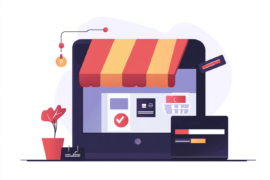This article may contain references to products or services from one or more of our advertisers or partners. We may receive compensation when you click on links to those products or services. Nonetheless, our opinions are our own.

Updated by Albert Fang
So, you’ve designed an awesome-looking online store. You’ve also created a rock-solid digital marketing strategy to attract more website visitors. Chances are you’re already leveraging Facebook ads and search engine optimization (SEO) to drive website traffic.
You can’t wait for new visitors to check out your website and purchase your products. But then days pass and you realize that your site traffic isn’t yielding actual conversions.
It’s the reality that plagues a plethora of new e-commerce businesses.
Attracting target consumers to your website is a job half-done. Unless those website visitors convert into customers, your online store will fail to find its footing.
This is why it’s so important to analyze your site traffic for a deeper insight into your audience’s online behavior and purchasing habits. It’ll help you understand how your target consumers are interacting with various website elements.
Also, you need to take a closer look at your website and optimize it for conversions. In this blog post, we’ll discuss a few important factors that could be taking a toll on your website conversions despite excellent traffic. Let’s get started.
1. Landing Pages and Targeting Parameters
Typically, you’ll use various techniques, such as SEO, social media ads, and pay-per-click (PPC) advertising to attract website visitors. Most marketers and website owners make the mistake of focusing all their efforts on creating a stellar ad or implementing a great SEO strategy.
In that process, you might end up ignoring what happens after someone clicks on your ad or search engine listing. The landing page where you take your target consumers from each channel plays a key role in driving sales. That’s why it is important to check whether the landing page delivers precisely what you promise your audience.
Let’s say you’re running a Facebook ad for a promotional offer on your products. When a user clicks on that ad, they want to know more about the offer. Instead, if the ad takes them to the home page of your online store, they’ll struggle to find relevant information. Ultimately, they’ll end up exiting your website without taking any action.
Make sure your landing page provides crisp, to the point, and meaningful information to each visitor. Also, use prominent and descriptive calls-to-action (CTAs) to compel visitors to take the desired action.
While you’re at it, don’t forget to check whether you’re using the right targeting parameters. If you’re driving traffic through SEO, identify the search intent associated with your target keywords. If the keywords don’t have commercial intent, they won’t generate direct sales, no matter how good your SEO strategy is.
Similarly, for Facebook ads, take a look at the interests, preferences, and other demographic parameters you’ve used to define your target audience.
Who has the patience to scroll through multiple pages before they find reliable information about a particular product? Absolutely no one.
Website architecture and navigation play a key role in shaping the purchase experience. A complex site architecture will require website visitors to click various tabs and menu items before finding a product. In today’s competitive e-commerce landscape, that’s going to cost you precious sales.
An easy way to evaluate website navigation is to ask a friend or acquaintance to scroll through your website for a particular product. Observe the number of times they need to click before landing on the product page.
Apart from navigation, site speed and responsiveness are important factors that influence user experience. Use Google’s PageSpeed Insights tool to identify ways to improve your website’s speed. Also, make sure your website delivers a seamless shopping experience across all devices.
3. Product Pages
A stellar website with excellent navigation and speed will go a long way to retain website visitors. But the fate of a sale depends on the quality of product pages on your website.
Revamp each product page with the following:
- Three to four high-quality product images
- A clear and concise title
- A short and easy to read product description
- Product reviews and ratings
If your product pages are lacking any of these, they’re going to pull your conversion rates down.
4. Checkout Process
Once a consumer reaches the cart, they’re only a few clicks away from making a purchase. But a lot could go wrong during that short period.
A convoluted checkout process that requires users to create an account or sign in first will drive potential customers away. Similarly, a lack of diverse payment options could amplify cart abandonment rates.
Make sure you analyze the checkout process to identify any glitches that could interfere with a sale.
5. Policies
The shipping and return policies, payment terms, and privacy policy play an important role in building trust and credibility. Also, they help maintain transparency on your website. Check whether these policies are easily understandable and accessible.
A successful online store needs both traffic and conversions to thrive. Irrelevant landing pages, poor navigation, complex checkout, and ambiguous terms and conditions could cause potential customers to exit your website without making a purchase. Also, it’s important to check and optimize each product page.

Reviewed and edited by Albert Fang.
See a typo or want to suggest an edit/revision to the content? Use the contact us form to provide feedback.
At FangWallet, we value editorial integrity and open collaboration in curating quality content for readers to enjoy. Much appreciated for the assist.
Did you like our article and find it insightful? We encourage sharing the article link with family and friends to benefit as well - better yet, sharing on social media. Thank you for the support! 🍉
Article Title: Check These 5 Things If You Are Getting Plenty of Site Traffic But Lagging Sales
https://fangwallet.com/2021/11/23/check-these-5-things-if-you-are-getting-plenty-of-site-traffic-but-lagging-sales/The FangWallet Promise
FangWallet is an editorially independent resource - founded on breaking down challenging financial concepts for anyone to understand since 2014. While we adhere to editorial integrity, note that this post may contain references to products from our partners.
The FangWallet promise is always to have your best interest in mind and be transparent and honest about the financial picture.
Become an Insider

Subscribe to get a free daily budget planner printable to help get your money on track!
Make passive money the right way. No spam.
Editorial Disclaimer: The editorial content on this page is not provided by any of the companies mentioned. The opinions expressed here are the author's alone.
The content of this website is for informational purposes only and does not represent investment advice, or an offer or solicitation to buy or sell any security, investment, or product. Investors are encouraged to do their own due diligence, and, if necessary, consult professional advising before making any investment decisions. Investing involves a high degree of risk, and financial losses may occur including the potential loss of principal.
Source Citation References:
+ Inspo




























![How to Hire Fintech Software Developers [Cost & Factors] fintech software engineers](https://fangwallet.com/wp-content/uploads/2025/03/fintech-software-engineers-270x180.png)















